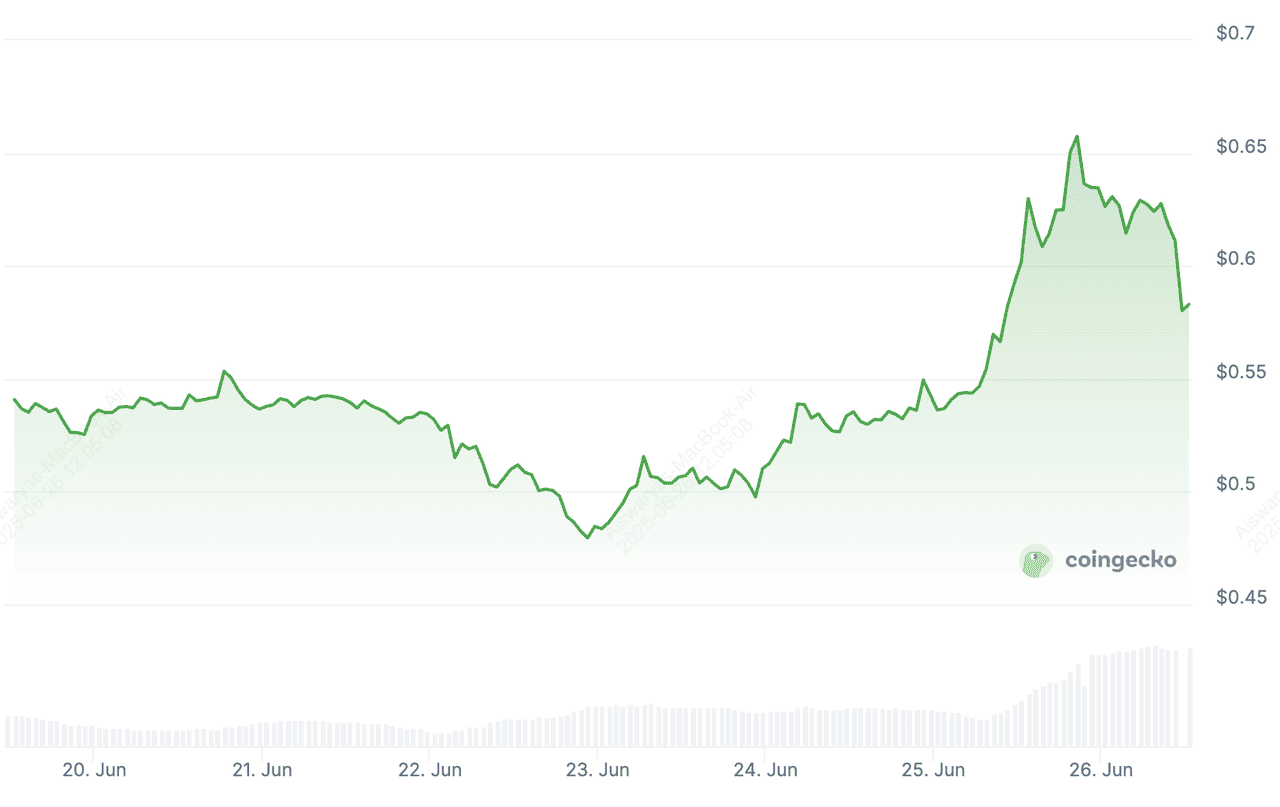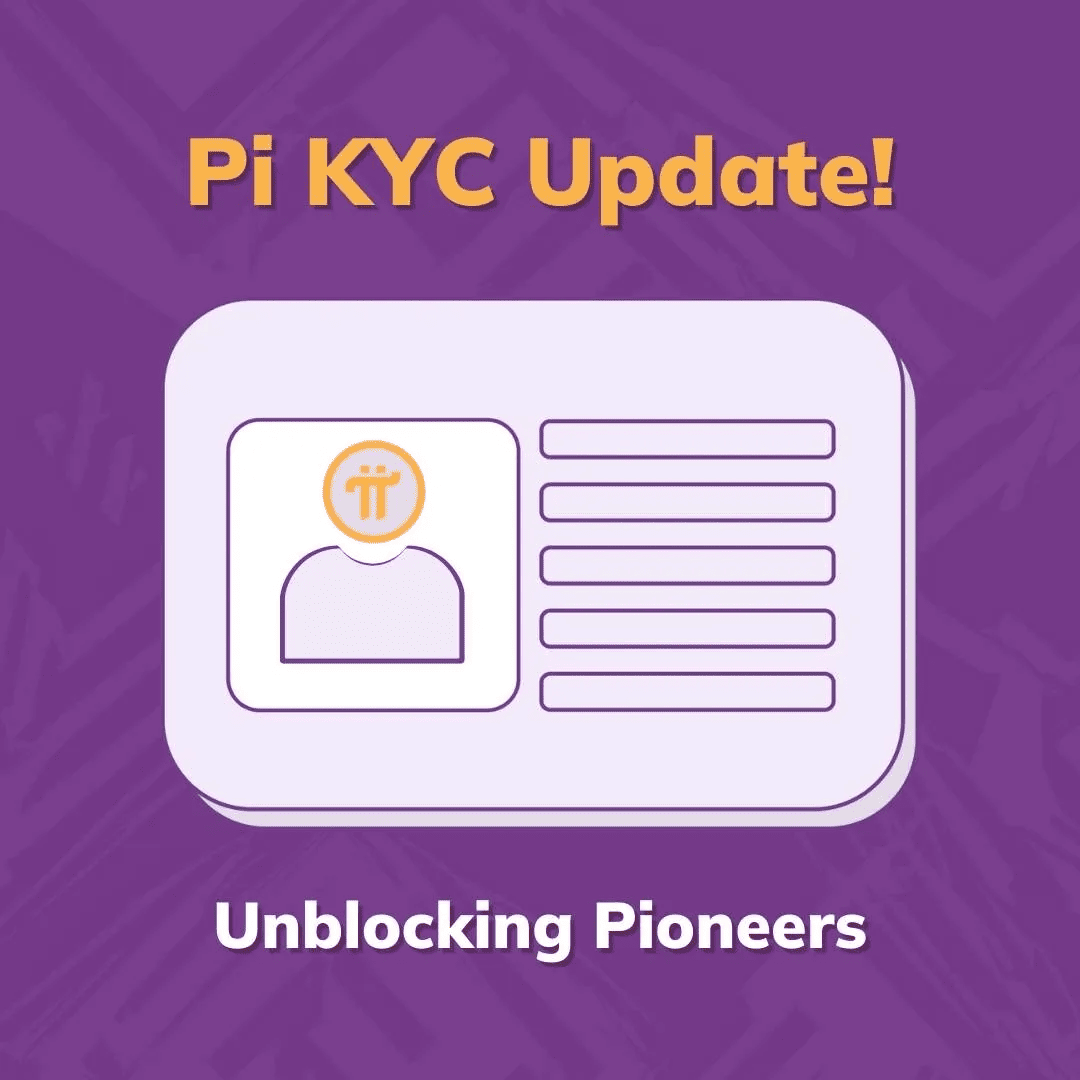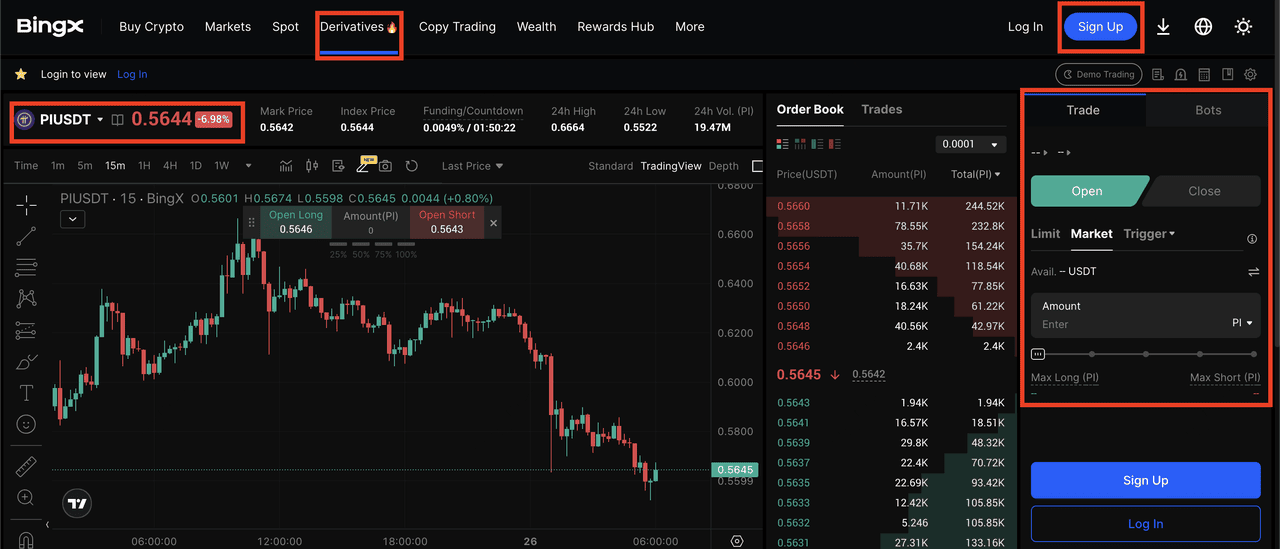Mining cryptocurrency has traditionally required expensive hardware and high energy consumption. However,
Pi Network allows users to mine coins directly from their smartphones, with no specialized equipment or significant electricity costs involved.
Founded by Stanford PhDs in 2019, Pi Network has grown into a global community of over 60 million members. It aims to build the most inclusive peer-to-peer ecosystem in
Web3.
June 28 is
Pi2Day, a major milestone for the community. Beyond a celebration, the Pi Core Team reveals major updates about the network on this day, including wallet upgrades,
KYC fixes,
AI integration hints, and new exchange listings.
And now that the Open
Mainnet is live, you can finally trade and sell your PI tokens on major exchanges.
This guide explains everything you need to know about what Pi Network is, how to buy, trade, and cash out your PI coins today, and the importance of Pi2Day 2025, .
What Is Pi Network (PI)?
Pi Network is a mobile-first cryptocurrency project designed to make mining more accessible. It allows users to earn Pi tokens by simply opening the app and tapping a button once a day, without the need for advanced hardware or technical knowledge.
Launched on March 14, 2019 (Pi Day), the project was founded by Stanford PhDs Dr. Nicolas Kokkalis and Dr. Chengdiao Fan with the goal of creating an energy-efficient and widely accessible digital currency.
Unlike traditional cryptocurrencies like
Bitcoin or
Dogecoin that rely on proof-of-work, Pi Network uses a lightweight consensus mechanism based on the
Stellar Consensus Protocol (SCP). This approach is optimized for mobile use, requiring minimal energy and data.
To ensure network integrity and prevent fraudulent activity, Pi Network incorporates a large-scale KYC (Know Your Customer) process. Users who complete verification can migrate their mined tokens to the Open Mainnet and gain full access to the platform’s features.
Within the network, you can take on four roles:
1. Pioneer: Tap daily to mine coins.
2. Contributor: Add others to your Security Circle to boost your mining rate.
3. Ambassador: Invite friends to earn referral bonuses.
4. Node: Run Pi’s node software to validate transactions and support the blockchain.
Pi Network is building a new kind of crypto economy, where identity, accessibility, and everyday use cases take center stage.
What Is PI Coin Used for?
Pi Coin (PI) is the native token of the Pi Network, a mobile-first blockchain project designed to make cryptocurrency mining accessible to everyday users. The primary utility of PI is to serve as a medium of exchange within the Pi ecosystem, enabling peer-to-peer transactions, in-app purchases, and payments across apps built on the Pi Network.
As the Open Mainnet expands, PI is also expected to be used for
staking, governance, and potentially paying for services in a decentralized app (
dApp) marketplace. Its broader utility will depend on ecosystem growth and developer adoption.
Pi2Day Comes on 28 June: What's That and Why it Matters?
Pi2Day, held on June 28 (inspired by 2π = 6.28), is a major community event for the Pi Network. It follows Pi Day (March 14) and celebrates the network’s progress and future plans. Over the years, Pi2Day has marked key milestones, from ecosystem tools and developer features to preparation for Open Mainnet.
In 2025, Pi2Day focuses on several high-impact updates. These include a large-scale KYC sync rollout, final rounds of .pi domain auctions, new dApps and developer tools, and potential signs of AI integration. There's also growing speculation around major exchange listings, especially now that the Open Mainnet is live. If successful, these developments could accelerate Pi’s ecosystem growth and unlock more real-world utility.
What Pi2Day Could Mean for PI Coin Price Movements

PI crypto price over the week preceding Pi2Day | Source: CoinGecko
Leading up to Pi2Day, PI token saw a price increase of 12% to 19%, with daily volumes crossing $150 million on some exchanges. While optimism around KYC expansion, AI, and exchange rumors drove bullish sentiment, risks remain. A large token unlock in early July could increase sell pressure, and ongoing KYC delays or broader market downturns may affect price stability. As Pi enters price discovery on Open Mainnet, every new update plays a role in shaping market direction.
How to Buy, Trade, and Cash Out PI Coins
With Pi Network's Open Mainnet now live, Pi Coin (PI) is finally tradable as a real asset on major centralized exchanges. That means no more IOUs or speculative tokens, just genuine PI you can send, receive, trade, or cash out like any other top cryptocurrency. You can access PI through KYB-verified exchanges, which have been officially approved by the Pi Network to support real PI tokens on the Open Mainnet.
What Is Pi Network's KYB Verification?
Before choosing where to trade, check if the exchange is KYB-verified by Pi Network. KYB (Know Your Business) ensures the platform has passed Pi’s official compliance and identity checks. KYB-approved exchanges are authorized to support real PI tokens on the Open Mainnet. Using a KYB-listed exchange helps protect you from scams, ensures your transactions are secure, and guarantees that you're trading real PI, and not speculative IOUs.
How to Buy PI Coins
Want to get started with Pi Coin? Here’s how to buy:
1. Create an Account on a KYB-Verified Exchange: Choose a platform that lists PI coins for trading. Sign up and complete the required KYC (identity verification) process.
2. Fund Your Exchange Wallet: Deposit
USDT or another supported currency into your spot wallet using fiat or crypto transfer. You can also buy USDT from BingX to fund your account.
3. Buy PI: Navigate to the trading page and search for the PI/USDT pair. Place a
market order to buy at the current price or a limit order if you want to set your entry point. Confirm the purchase and check your
wallet for the updated balance.
Trade PI Perpetual Contracts on BingX Futures
In addition to spot trading, you can trade
USDⓈ-margined PI perpetual contracts on
BingX Futures. This means your margin, PnL, and settlement are all denominated in USDT, not PI. To get started, go to the Futures tab, search for
PI/USDT, and choose your preferred order type, such as Market, Limit, or Trigger Order.
BingX supports up to 50x leverage on PIUSDT contracts, allowing you to go long or short depending on your market outlook. You can also take advantage of advanced trading features like
Take-Profit/Stop-Loss (TP/SL) settings, isolated and cross margin modes, and real-time risk analysis tools to manage your position effectively.
Note: Perpetual contracts can be useful for hedging or capturing short-term price movements, but they involve volatility risks. Always practice proper
risk management and understand how leverage impacts your portfolio.
How to Cash Out Your PI Coins
Ready to convert your PI into USDT or fiat? Follow these steps:
Step 1: Complete KYC and Migrate to Mainnet
Before withdrawing your PI coins and cashing out, make sure you’ve passed Pi Network’s KYC verification. Once approved, your mined coins will be migrated to the Open Mainnet wallet.

Source: PI Network blog
Step 2: Choose an Exchange & Deposit PI
Pick a supported exchange from the list of KYB verified businesses mentioned on Pi Network's official website. Create an account, verify your identity, and copy your Pi deposit address. Use your Pi Wallet to transfer PI to your exchange wallet.
Step 3: Place a Sell Order
Go to the trading section, select the PI/USDT or other available trading pair. Choose a market order for instant sale or a limit order if you want to set your price. Enter the amount of PI you want to sell and confirm.
Step 4: Withdraw Your Funds
Once the sale is complete, withdraw the USDT or fiat to your bank or crypto wallet. Many exchanges support direct transfers to external wallets or linked accounts.
Always double-check that the exchange is listed on Pi Network’s official KYB directory before trading. It’s the best way to avoid scams and ensure you're using the real Pi ecosystem.
Key Considerations When Trading PI Coins: Security & Fees
When trading PI, always double-check the deposit address and ensure you're using real PI tokens, not IOUs or wrapped versions. Stick to exchanges that support verified trading through Pi Network’s KYB (Know Your Business) program for added security. Be aware of the costs involved. Most platforms charge trading fees between 0.1% and 0.5%, along with withdrawal fees based on the network you use (like USDT on
Ethereum).
You should also account for spread and slippage, which can affect how closely your trade matches the intended price. To avoid surprises, check the platform’s
liquidity depth and trading volume before placing an order. As PI trading expands across more exchanges, staying informed and cautious helps you make safer, smarter moves.
Top Tips for Beginners: Getting Started with PI Crypto
New to Pi Coin? Here are a few key tips to help you get started safely.
1. Do Your Own Research (DYOR): Read official updates, follow Pi Network on verified channels, and avoid rumors. Never rely solely on hype.
2. Only Invest What You Can Afford to Lose: Like all crypto projects, Pi carries risk. Don’t overcommit. Use a long-term mindset.
3. Stay Updated About Latest Events: Events like Pi2Day, exchange listings, or KYC rollouts can affect price and access. Keep an eye on announcements.
5. HODL vs. Trade PI Coin?: Decide your strategy early. Some holders prefer to wait for long-term adoption. Others trade during event-driven price moves. Choose what fits your risk tolerance.
Being early has its benefits, but only if you stay informed and protect your assets.
Closing Thoughts
Pi Network is building a mobile-first Web3 ecosystem designed to make cryptocurrency more accessible to everyday users. With over 60 million members, its focus on identity, community, and utility sets it apart from traditional, hardware-intensive crypto models. Pi2Day 2025 highlights the network’s progress, with updates expected across KYC expansion, ecosystem tools, dApp development, and potential exchange listings.
As the Open Mainnet rolls out, users can now trade or hold PI coins on supported platforms. However, like all crypto projects, Pi Network carries risks. Market volatility, regulatory uncertainty, and delays in technical implementation could affect the token’s future. Always do your own research (
DYOR), stay cautious of unofficial platforms or IOU listings, and never invest more than you can afford to lose.
Related Reading
FAQs on Pi Network
1. What exactly is Pi2Day?
Pi2Day is celebrated every year on June 28 (6.28) and marks a key milestone in the Pi Network ecosystem. It represents 2π (two times pi) and follows Pi Day (March 14). On this day, the Core Team typically announces important updates—like KYC rollouts, new features, dApps, or roadmap milestones. For the community, it’s a chance to reflect on progress and prepare for what’s next.
2. When and how can I transfer or sell PI?
You can transfer or sell PI once you’ve completed KYC and migrated your balance to the Open Mainnet. After that, send your PI to a supported exchange like OKX, Bitget, Gate.io, or MEXC. From there, you can trade it for USDT or other tokens using a market or limit order. Always double-check wallet addresses and platform legitimacy before making any transfers.
3. Can Pi hit $1 after Pi2Day?
Pi Coin has shown strong momentum around Pi2Day, but prices are still volatile. Some analysts believe Pi could cross $1 if major exchange listings or AI partnerships are announced. However, others warn that the July unlock of 268 million PI may increase supply and put downward pressure on price. There’s no guarantee, always manage your expectations and risks.
4. Is Pi Network safe?
Pi Network is considered generally safe for mobile users, with no major security breaches reported. It uses KYC, a lightweight consensus mechanism, and app-level security. However, the lack of third-party audits and ongoing concerns about decentralization make some users cautious. Never share your private keys or passwords, and stick to official apps and platforms.
5. What’s the difference between IOU and real PI?
Real PI refers to the actual token on the Pi Network’s Open Mainnet that you can hold, transfer, and trade. IOU PI is a placeholder token some exchanges offered before the mainnet launch, based on speculation. IOUs don’t guarantee redemption and can’t be used in the official Pi ecosystem. Always confirm you’re using real PI on Pi’s mainnet before trading or selling.
 PI crypto price over the week preceding Pi2Day | Source: CoinGecko
PI crypto price over the week preceding Pi2Day | Source: CoinGecko
 Source: PI Network blog
Source: PI Network blog